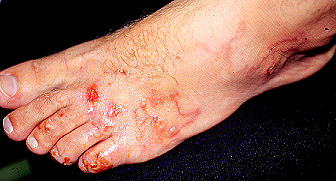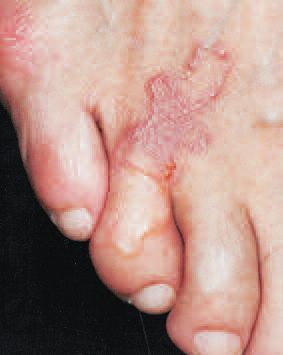Intestinal Nematodes Infections: Diagnosis And Treatment Of Ancylostomiasis And The Clinical Features Of Trichuriasis
How To Treat Hookworm Infections

Diagnosis And Treatment Of Ancylostomiasis
Diagnosis: The diagnosis is established by the demonstration of the ova in feces. Ova of A. duodenale and N. americanus are indistinguishable. The feces gives positive reaction for occult blood. The wormload is quantified by the egg counting method of Stohl. Each worm produces 30 eggs per gram of feces per day. Species identification is carried out by examining the adult worms passed after a vermifuge.
Treatment: Specific treatment can be administered directly if the hemoglobin is above 7g/dl. In severely anemic patients, proper diet and iron supplements are given to raise the hemoglobin to 5g/dl or more before administering the anthelmintic.
Mebendazols is a broadspectrum anthelmintic active against hookworm and other nematodes. The drug is safe and well tolerated with only minimal side effects. It is given in the dose of 100 mg twice daily for three consecutive days after food (for adults). This drug produces clearance of 80% of worms in a single course and almost complete clearance if two courses are administered at an interval of 2 weeks. Due to risk of teratogenicity the drug is contraindicated during pregnancy and infancy.
Bephenium hydroxyl nephthoate 5g in a single dose given on empty stomach is an effective drug. Two or three courses may be required for eradication. Pyrantel pamoate, which is also a broad spectrum anthelmintic, given in a single dose of 11 mg/Kg body weight is very effective in clearing the infection.
Prophylaxis: Personal measures include the use of proper footwear and sanitary disposal of excreta.
How To Diagnose And Treat Whipworm Infection

Infectious Diseases
Trichuriasis (Whipworm Infection)
Trichuris trichura is worldwide in distribution. It is especially prevalent in the tropics. The prevalence rate in India for instance varies from 5% to 25% in different communities.
Morphology and habitat: The adult worm measures 30 to 50 mm in length, the females being larger than males. The anterior three fifths is slender and filiform and the posterior two-fifths is bulky and fleshy. The worms are seen in the caecum and large intestine with their anterior ends introduced into the mucosa to suck blood. The eggs are barrel-shaped, translucent, 20 to 50u in size, thick walled, and possess knob-like ends.
Life Cycle: The eggs become embryonated and infective in three weeks after being passed. They are ingested. Hatching occurs in the small intestine. The larvae get attached to the intestinal villi and after variable periods migrate to the large intestine where they mature in about 3 months. Though, not exactly known, the lifespan of the worm is probably several years. The adults suck and lead to blood loss, though in a smaller degree than hook-worms. With the elimination of hookworms from many communities, whipworms have emerged as a major cause of intestinal blood loss.
Clinical Manifestations Of Trichuriasis
Mild infections pass unnoticed and the diagnosis is made by routine examination of feces. Heavy infection, which is common in children and certain susceptible subjects, is accompanied by nausea, vomiting, diarrhea and other evidences of colitis. Concurrent infection with amoebae and other helmonthes like round worms and hookworms is common. Heavy infections may lead to malabsorption state.
Diagnosis: Demonstration of the eggs in feces establishes the diagnosis. Adult worms may be seen hanging from the walls of the colon on endoscopy.
Treatment: Mebendazole is the drug of choice. Administration of 100 mg tablets twice daily for three consecutive days produces a cure rate of 50 to 60%. Repeated courses improve the clearance rate. This drug should be used with caution in children and pregnant women.
© 2014 Funom Theophilus Makama









